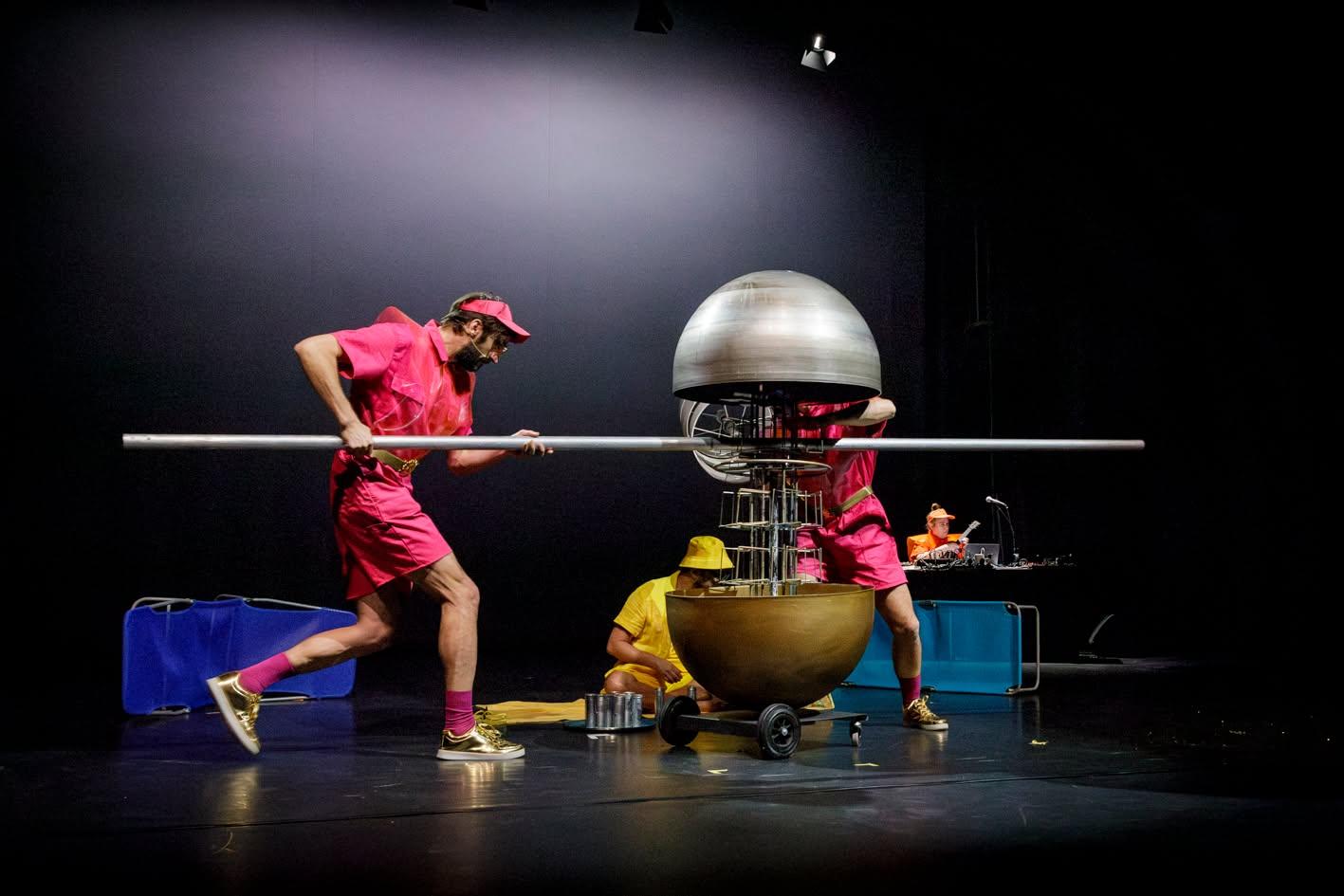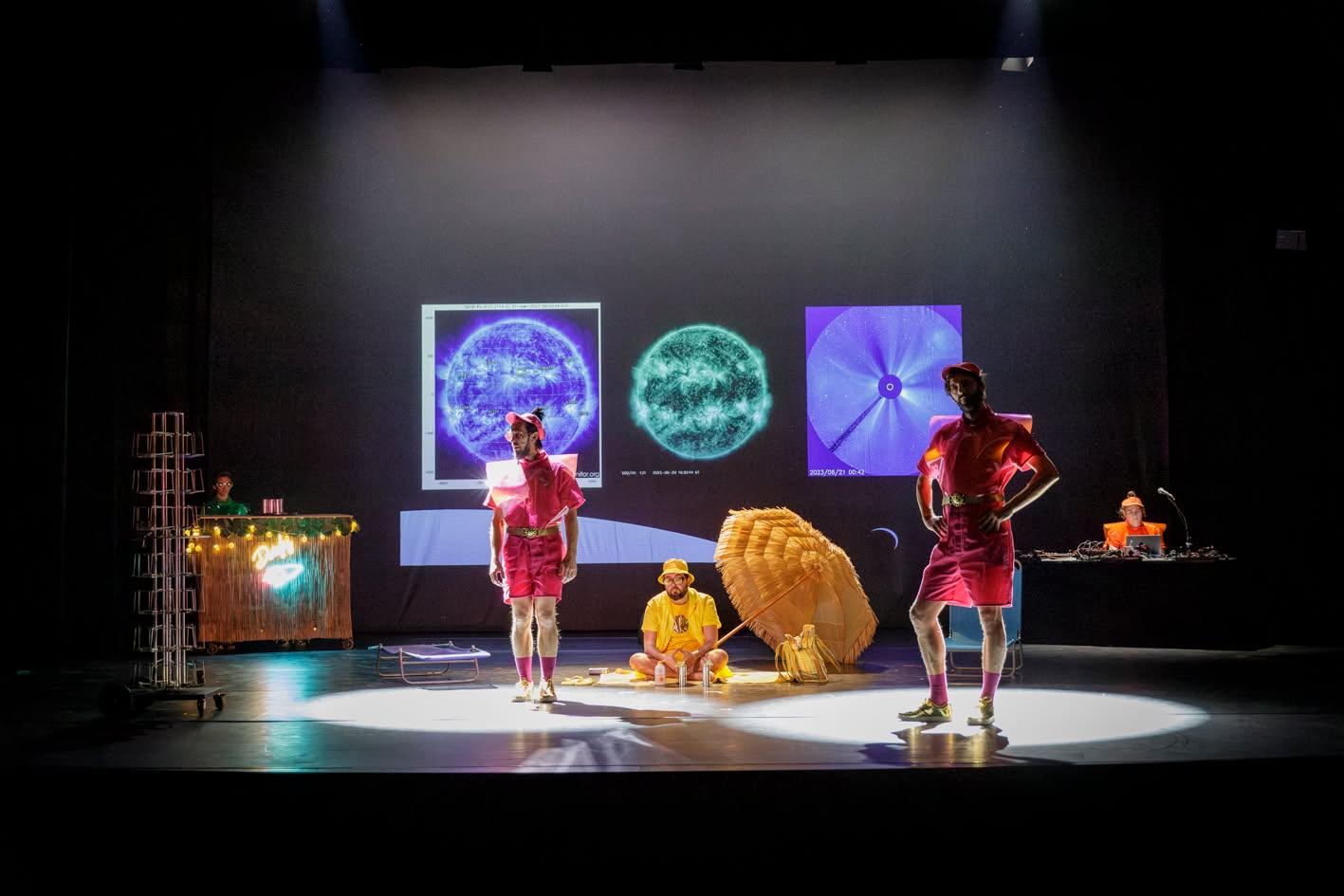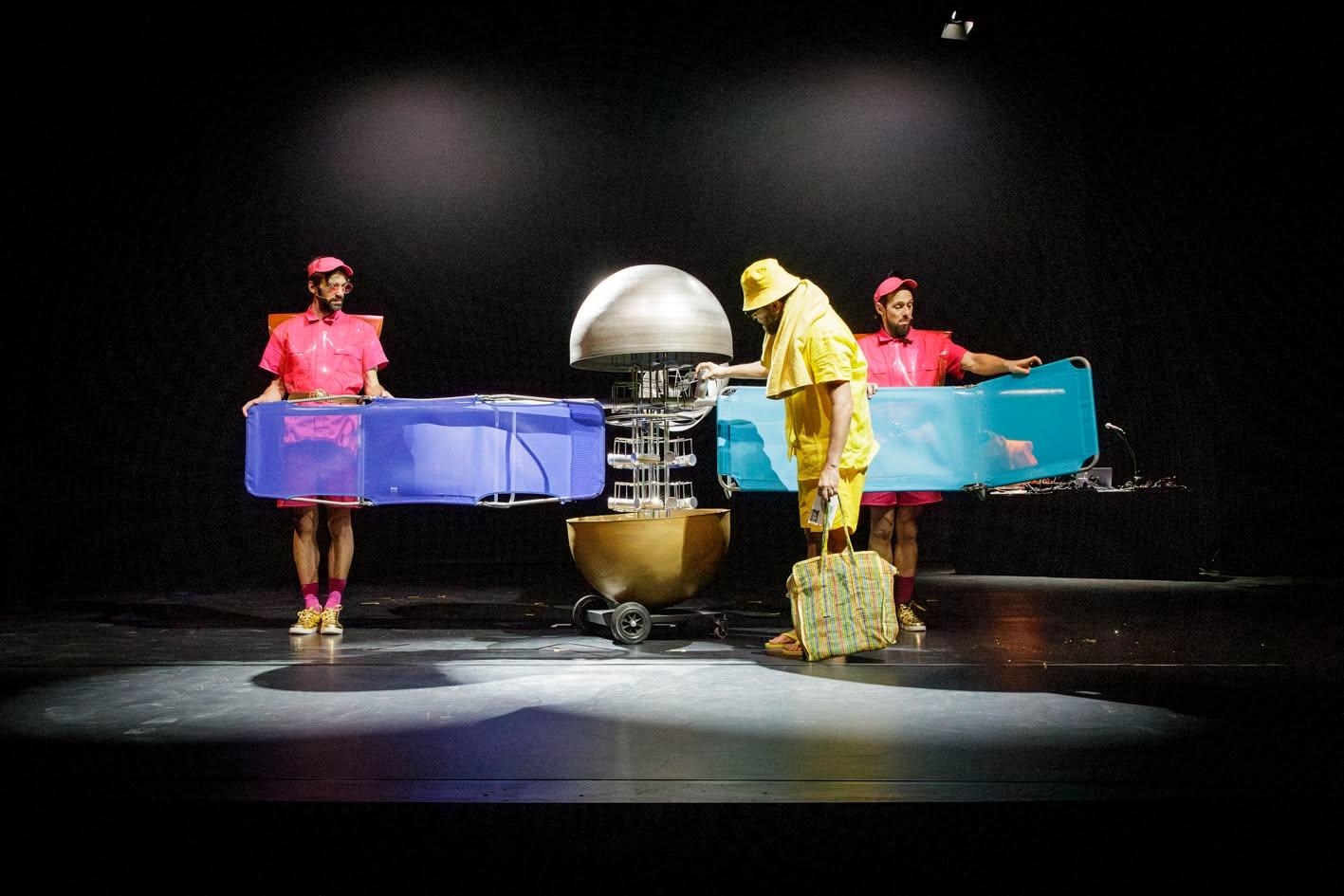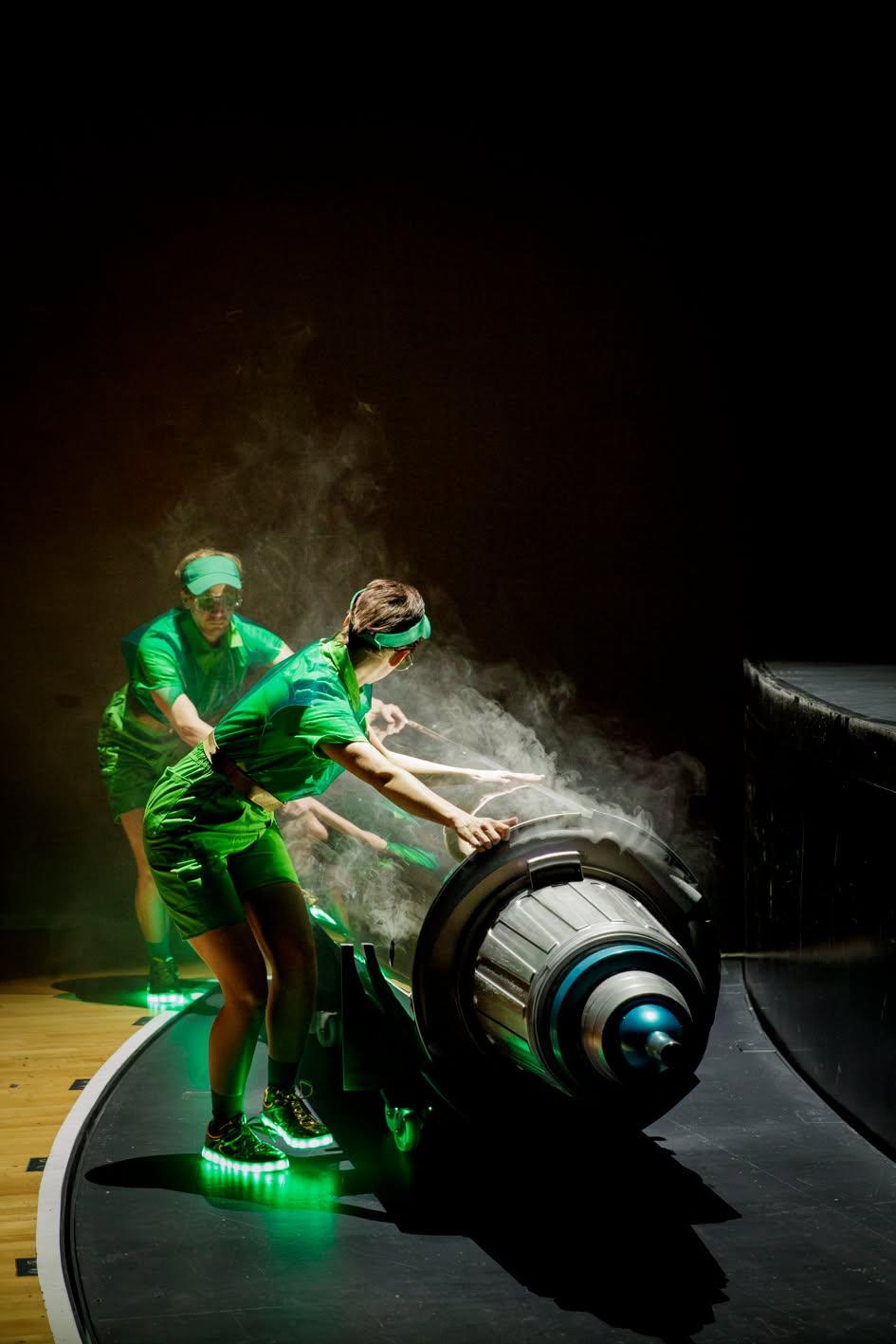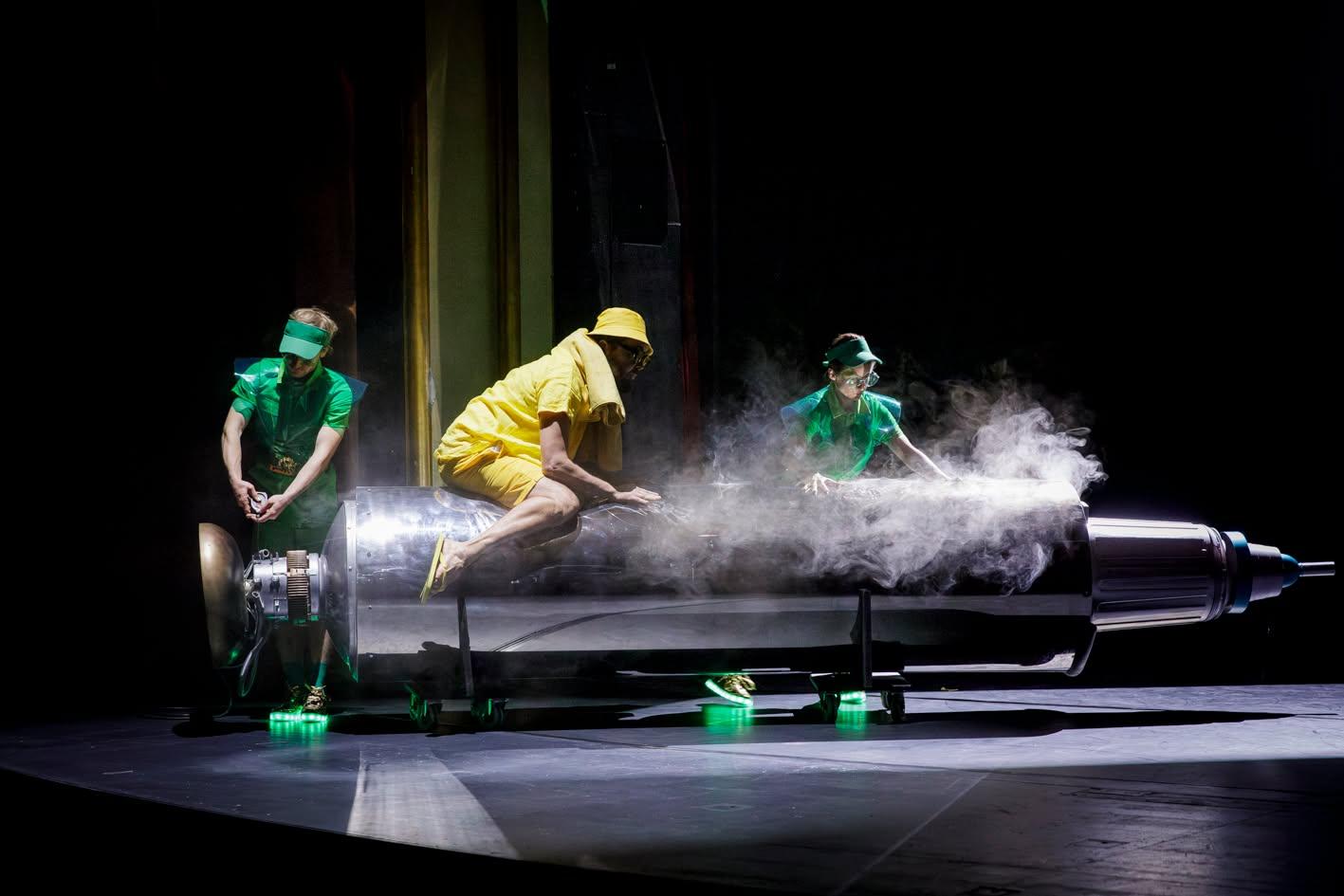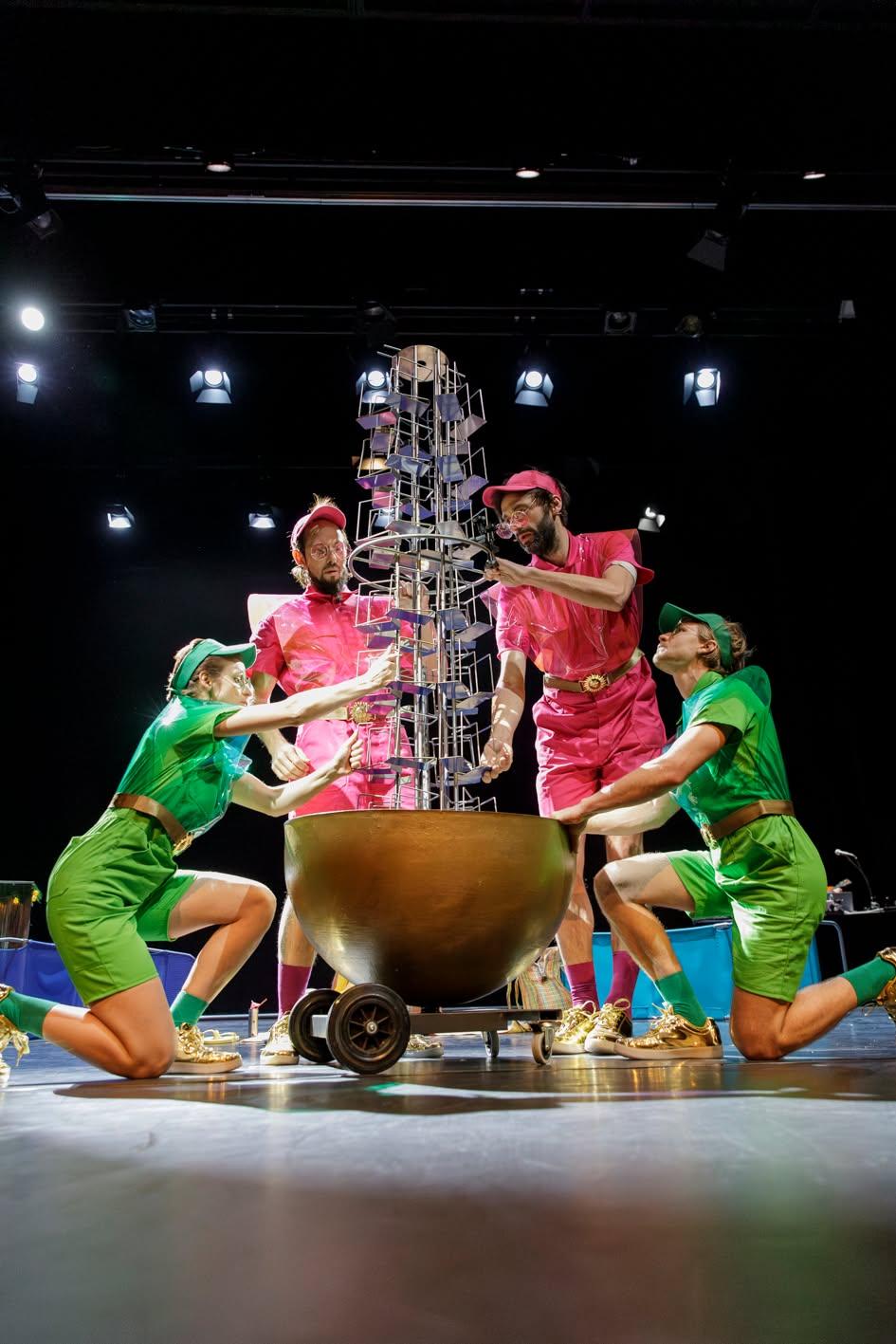SONNENSTURM
In September 1859, dazzling auroras were seen as far south as Rome and Havana. The newly installed global telegraph network almost collapsed when an immense surge of electric current raced through its wires, sparking and crackling in receiving stations. The cause was the most powerful solar storm ever recorded.
The theatre collective Nucleus brought these questions to life
in a performance at Theatre Chur in Switzerland, combining installation-based spatial design, live music, sculptural costumes, light play, planetary choreography, and narrative experimentation. The piece reflected on the sun as both life-giving and potentially catastrophic, merging scientific insight, mythology, and artistic imagination to explore how a similar event might affect a fully electrified, digital society.
I worked on this production as a scenographer, designing and building the entire scenography. The set was intentionally constructed from everyday objects — metal frames, furniture fragments, cables, and household tools — chosen for their familiarity and then reimagined beyond their original purpose. These ordinary items were transformed and combined into sculptural structures that suggested planetary landscapes, fragmented satellites, and strange celestial machines. Through layering, suspension, and unexpected juxtapositions, tables became orbiting platforms, chairs rose as skeletal towers, and wires traced the trajectories of invisible cosmic forces.
The immersive environment came alive with live music and dance, which acted as a second architecture within the set. Musicians created pulsating soundscapes that shifted from quiet solar murmurs to explosive bursts of rhythm, while dancers moved through and against the structures like orbiting bodies — at times flowing with the music’s gravitational pull, at times breaking free in weightless leaps. Their planetary choreography deepened the sense of being inside a living, shifting cosmos, turning the theatre into an otherworldly, multi-sensory space where science, art, and myth converged.
Photos by Mali Lazell
The theatre collective Nucleus brought these questions to life
in a performance at Theatre Chur in Switzerland, combining installation-based spatial design, live music, sculptural costumes, light play, planetary choreography, and narrative experimentation. The piece reflected on the sun as both life-giving and potentially catastrophic, merging scientific insight, mythology, and artistic imagination to explore how a similar event might affect a fully electrified, digital society.
I worked on this production as a scenographer, designing and building the entire scenography. The set was intentionally constructed from everyday objects — metal frames, furniture fragments, cables, and household tools — chosen for their familiarity and then reimagined beyond their original purpose. These ordinary items were transformed and combined into sculptural structures that suggested planetary landscapes, fragmented satellites, and strange celestial machines. Through layering, suspension, and unexpected juxtapositions, tables became orbiting platforms, chairs rose as skeletal towers, and wires traced the trajectories of invisible cosmic forces.
The immersive environment came alive with live music and dance, which acted as a second architecture within the set. Musicians created pulsating soundscapes that shifted from quiet solar murmurs to explosive bursts of rhythm, while dancers moved through and against the structures like orbiting bodies — at times flowing with the music’s gravitational pull, at times breaking free in weightless leaps. Their planetary choreography deepened the sense of being inside a living, shifting cosmos, turning the theatre into an otherworldly, multi-sensory space where science, art, and myth converged.
Photos by Mali Lazell
